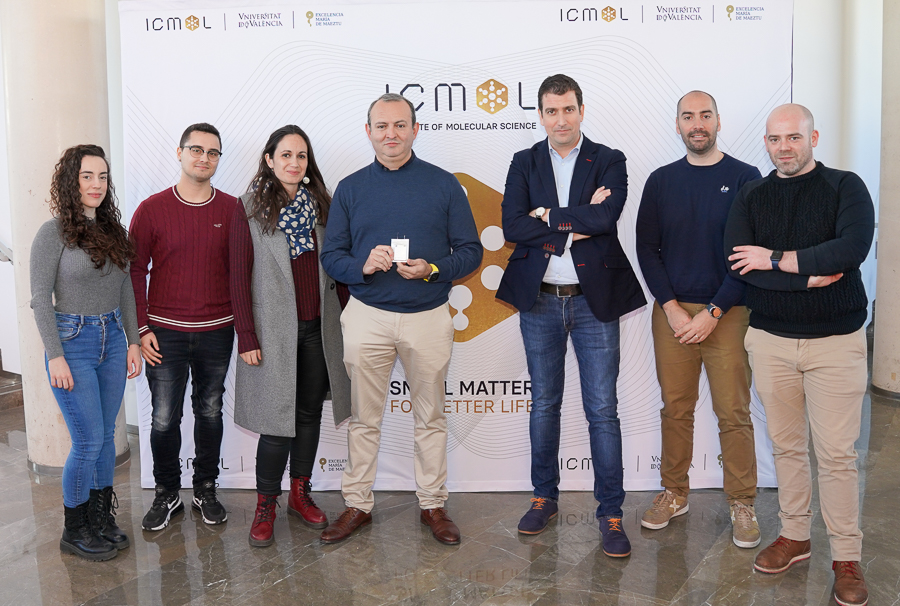
Graphenano and the Institute of Molecular Science (ICMol) of the University of Valencia have developed the first battery cell without current collectors or metal terminals. The system, which instead uses graphene and carbon nanomaterials, paves the way for the manufacture of safer, lighter and more efficient batteries. Its application in the electric car, aviation or stationary storage sectors, among others, revolutionises the field of battery safety and efficiency.
The project has managed to remove the sheets of copper, aluminium or steel used in conventional batteries to evacuate electrical current, and also the tabs (current terminals) made of nickel or other metals, which are used to transfer energy from inside to outside from the battery.
Replacing these metals with graphene and other carbon nanomaterials – materials with good electrical conductivity – significantly reduces the weight and volume of the devices, increases the energy density between 30% and 60%, and eliminates the risk of accidents due to explosion or fire on contact with water, as verified in tests.
“We have patented a technology that solves the problem of battery safety with a disruptive approach”, says Martín Martínez, CEO of Graphenano. “Our system provides such chemical stability that the battery does not burn on contact with water, not even in the presence of water, and this makes it possible to dispense with the heavy safety shields of current batteries”, explains the businessman.
This technique thus makes it possible to develop safer, lighter, more powerful, compact and, ultimately, more sustainable batteries. The reduction in weight and volume makes it possible to increase both the energy density (in watt hours per kilogram) and the volumetric density (watt hours per litre). All this without the need to replace the current cell assembly machinery, something that facilitates its implementation without excessive industrial cost.
(From left to right) Raquel Vegara (ICMol), Raúl Serna (ICMol), María Simón (Graphenano),
Martín Martínez (CEO Graphenano), Gonzalo Abellán (2DChem-ICMol),
Rafael Molero (Graphenano) and Jorge Romero (ICMol)
Sustainable and recyclable
The new cell is more environmentally sustainable as it does not contain the metals from the collectors. It also considerably reduces its carbon footprint and favours the recycling of materials in line with Battery Passport, the European Commission’s strategy to control the complete life cycle of the battery. “Doing without these scarce metals on Earth undoubtedly impacts the economy and global geostrategy”, says Gonzalo Abellán, leader of the 2DChem (ICMol) group involved in the project together with the team of Professor Eugenio Coronado, on behalf of the University of Valencia.
“This is a very versatile system that can be used in different chemistries, such as those that use lithium or sodium, and that opens up a new field in silicon batteries, supercapacitors, fuel cells and hydrogen electrolyzers”, explains Abellán. “Collaboration between innovative companies, such as Graphenano, and research centres of excellence such as the ICMol is essential for economic and social progress, and this is an example of this”, concludes the scientist.
In its energy division, Graphenano operates the business of graphene polymer cells for use in different applications. The Institute of Molecular Science of the University of Valencia focuses its work on the molecular aspects of nanoscience and on the study of materials that have magnetic, electrical or optical properties. Since 2016, it has been a centre ministerially recognised as a María de Maeztu Unit of Excellence.
More batteries@icmol.es


